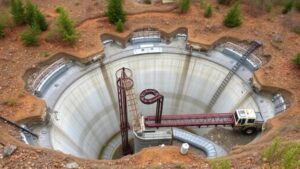Exploring Forgotten Fossil Layers with Tools from National Park Databases
Exploring Forgotten Fossil Layers with Tools from National Park Databases
The exploration of fossil layers within national parks offers significant insights into Earth’s biological and geological history. Fossils provide a window into past ecosystems, contributing to our understanding of evolution, climate change, and extinction events. National parks serve as vital repositories for these fossils, yet many layers remain understudied and underappreciated. This article explores how leveraging data from national park databases can aid researchers in accessing and analyzing these forgotten fossil layers, enhancing our knowledge of paleoenvironments.
The Role of National Park Databases
National park databases are crucial for paleontological research. They typically house extensive data sets that include geological maps, fossil inventories, and research publications. These resources allow scientists to identify locations of fossil deposits and understand the spatial distribution of different strata. For example, the National Park Service (NPS) maintains the Fossil Resource Inventory and Monitoring Program, which catalogues fossil occurrences and stratigraphy within several parks, making it accessible for researchers. In 2015, the park system reported over 10,000 fossil specimens across multiple parks, underscoring their national significance.
Identifying Forgotten Layers
Many fossil layers remain neglected due to limited research interest or difficulty in accessing remote locations. Utilizing geographic information systems (GIS) and the data available from national park databases allows researchers to visualize these layers more effectively. For example, in Badlands National Park, South Dakota, studies utilizing GIS have led to the identification of previously unrecorded fossil-rich layers, including the Brule Formation, which dates back approximately 33 to 28 million years ago.
Case Studies in Fossil Layer Exploration
Several case studies showcase the successful application of national park databases in exploring lesser-known fossil layers:
- Aguirre Spring and the Organ Mountains: In 2018, researchers utilized the parks geological database, revealing a layer of fossilized marine life in a historically terrestrial area, indicating an ancient seabed.
- Grand Canyon National Park: By integrating data from the NPS and local geology resources, paleontologists discovered new fossil sites in the Bright Angel Shale, which has provided insights into early marine ecosystems.
Challenges in Fossil Research
Despite the advantages of these tools, research into forgotten fossil layers is fraught with challenges. One major concern is accessibility; remote sites may be difficult to reach, and inclement weather can inhibit fieldwork. Plus, the classification and preservation of fossil specimens are critical issues. Fossils are susceptible to damage, requiring careful handling and storage. The Dinosaur National Monument reports that approximately 90% of its fossil quarry is still unexcavated, emphasizing the need for improved conservation measures.
Future Directions
The field of paleontology will benefit from advancements in technology and data mining. Emerging technologies such as machine learning can be employed to predict fossil locations based on existing stratigraphic data. Continued collaboration between park services and academic institutions can also bridge gaps in research interest and funding, potentially revitalizing interest in forgotten fossil layers. Also, public engagement initiatives can raise awareness about the importance of these resources.
Conclusion
Exploring forgotten fossil layers within national parks represents an opportunity to deepen our understanding of Earths history while preserving its natural heritage. By effectively utilizing national park databases, researchers can make significant strides in uncovering hidden geological treasures, thereby contributing valuable knowledge to the scientific community. integration of innovative research methods and collaborative efforts will be essential in addressing existing challenges and promoting the exploration of these vital fossil records.
Actionable Takeaways
- Engage with national park databases and digital resources to identify and study neglected fossil layers.
- Use GIS technology to visualize and analyze geological formations effectively.
- Encourage partnerships between researchers, park services, and the public to promote fossil preservation and research initiatives.


